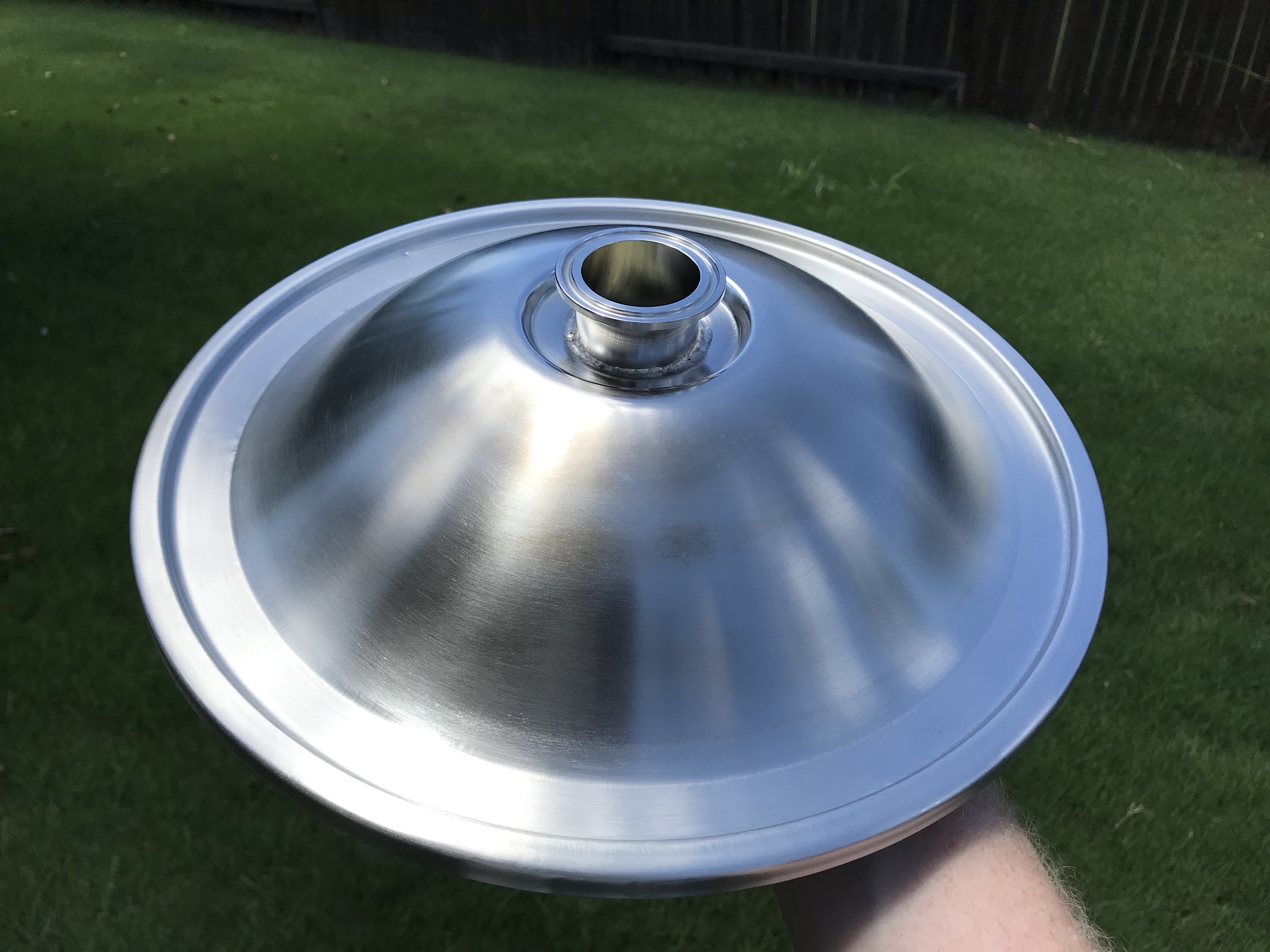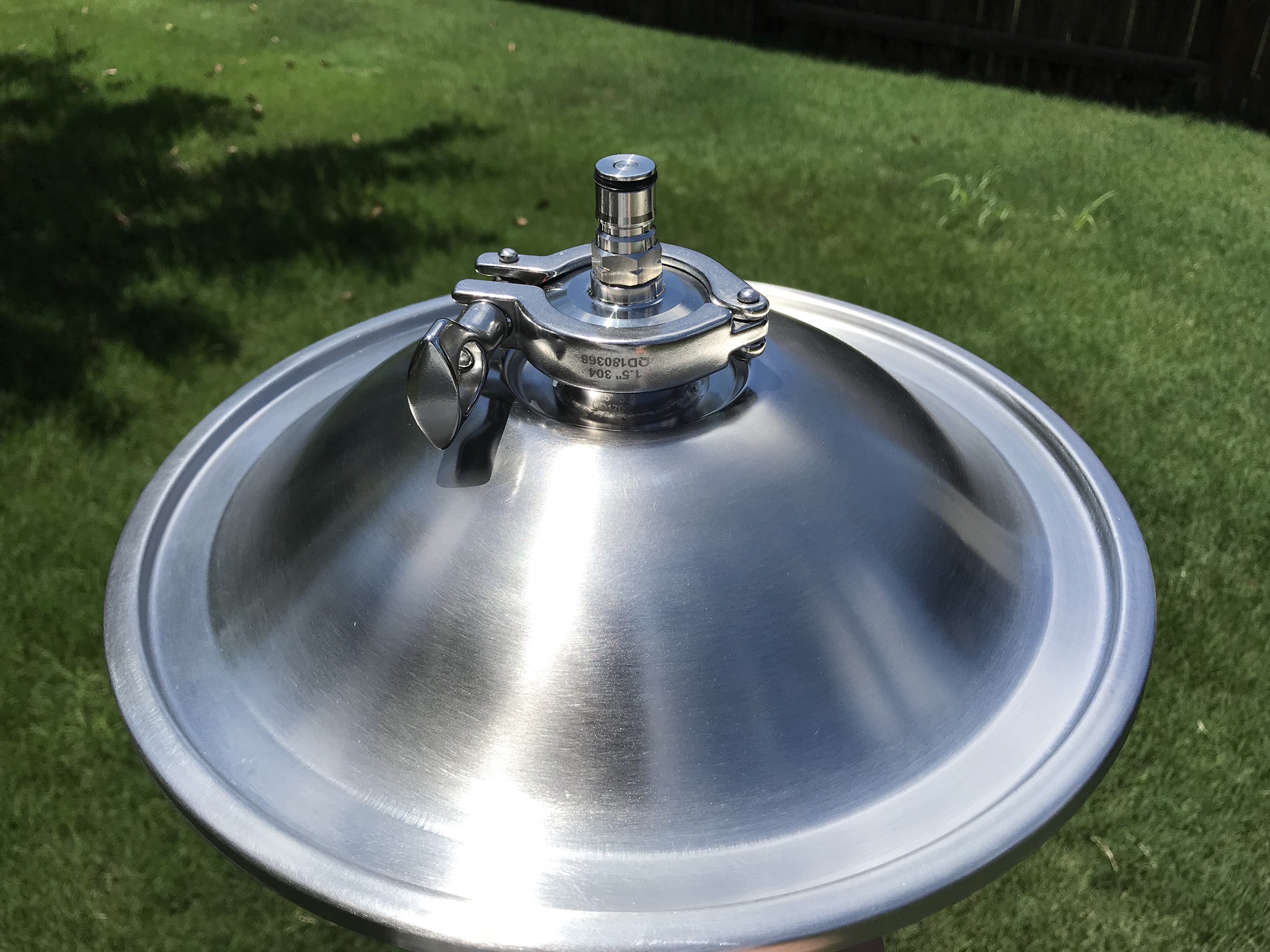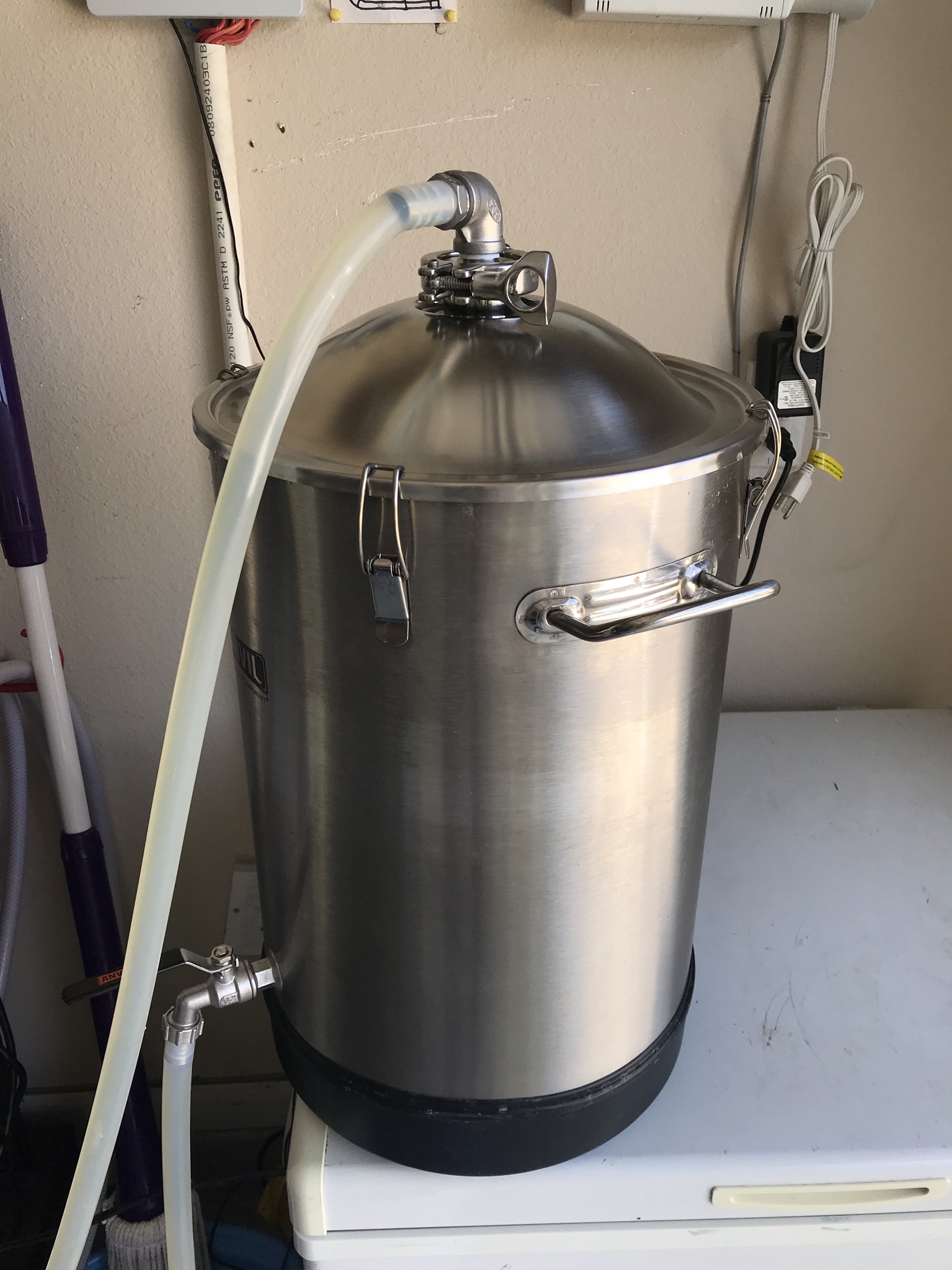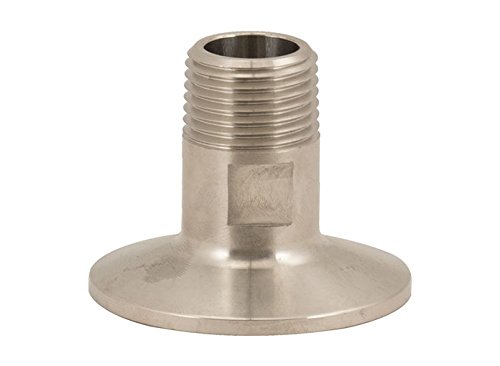- Joined
- Nov 19, 2017
- Messages
- 250
- Reaction score
- 93
A few batches ago I picked up an Anvil Bucket Fermentor and being the "tinkerer" I am, I decided to solder a 1.5" TC ferrule to the lid

This opens up a ton of possibilities for accessories. I also picked up a 1.5" TC gas post fitting that I can use for both blow off purposes as well as introducing CO2 for pressure transfers.

I also picked up an SS Brewtech Micro Ball Sprayer for easy cleaning.

One last thing I was thinking of doing was picking up a 1.5 TC to 1/2 NPT

...throwing a type A camlock fitting on this and using this to pump my chilled wort into my fermentor. This way the hose is securely connected to the fermentor lid and I don't have to worry about it being submerged or getting kicked or falling out of the fermentor body. Also, I should be able to keep the fermentor mostly sealed while filling it up which is a huge bonus because I brew in my garage and usually by the end of my brew day I'll have 2-3 flies buzzing around looking for sweet wort.
Does anyone else use a fitting like this to pump their wort into their fermentors?
I assume I'll have to leave the lid a little loose to the let oxygen out as the vessel fills?
I also assume it's fine to just let the wort fall from the lid to the bottom of the vessel? I'll still oxygenate it with pure O2, but I letting it splash to the bottom will just help it oxygenate more.

This opens up a ton of possibilities for accessories. I also picked up a 1.5" TC gas post fitting that I can use for both blow off purposes as well as introducing CO2 for pressure transfers.

I also picked up an SS Brewtech Micro Ball Sprayer for easy cleaning.

One last thing I was thinking of doing was picking up a 1.5 TC to 1/2 NPT

...throwing a type A camlock fitting on this and using this to pump my chilled wort into my fermentor. This way the hose is securely connected to the fermentor lid and I don't have to worry about it being submerged or getting kicked or falling out of the fermentor body. Also, I should be able to keep the fermentor mostly sealed while filling it up which is a huge bonus because I brew in my garage and usually by the end of my brew day I'll have 2-3 flies buzzing around looking for sweet wort.
Does anyone else use a fitting like this to pump their wort into their fermentors?
I assume I'll have to leave the lid a little loose to the let oxygen out as the vessel fills?
I also assume it's fine to just let the wort fall from the lid to the bottom of the vessel? I'll still oxygenate it with pure O2, but I letting it splash to the bottom will just help it oxygenate more.


